This grade II listed building was originally the North Western Hotel. The 330-room hotel was built by the London and North Western Railway to serve Liverpool Lime Street Station. It was designed by the renowned Liverpool-born architect Alfred Waterhouse. The North Western Hotel closed in the 1930s. It stood empty until 1996 when the upper floors were converted into halls of residence and the ground floor became a public house which now has its original name.
A framed photograph and text about The North Western.
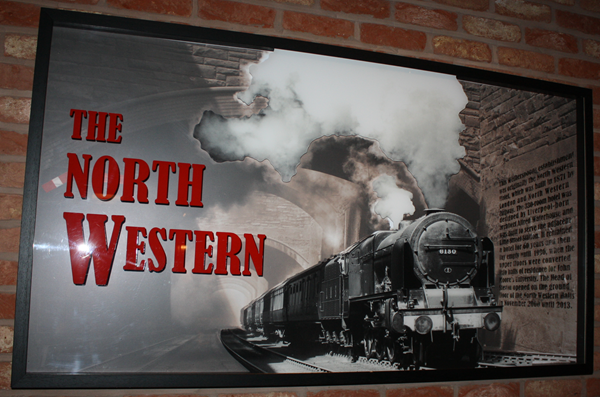
The text reads: This Wetherspoons establishment was originally the North Western Hotel, which was built in 1871 by London and North Western Railway. The 330-room hotel was designed by Liverpool-born architect Alfred Waterhouse and was built to serve the adjacent Lime Street Station. It remained a hotel for 60 years and then lay empty until 1996, when the upper floors were converted into halls of residence for John Moore’s University. The Head of Steam opened on the ground floor of the North Western Halls in November 2000 until 2013.
A plaque warning against trespassing on the railway.
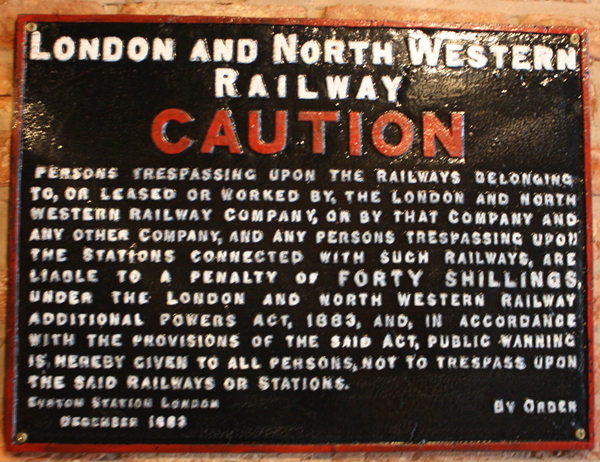
A framed photograph and text about Liverpool Lime Street Station.
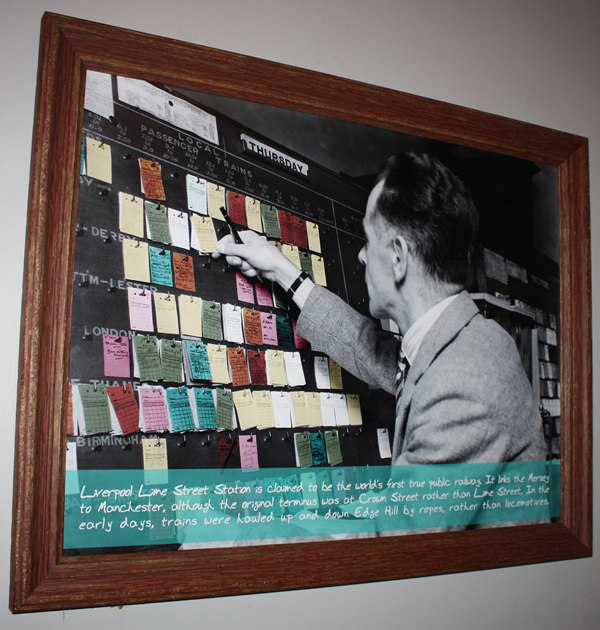
The text reads: Liverpool Lime Street station is claimed to be the world’s first true public railway. It links the Mersey to Manchester, although the original terminus was at Crown Street rather than Lime Street. In the early days, trains were hauled up and down Edge Hill by ropes, rather than locomotives.
A framed photograph and text about family camping holidays.
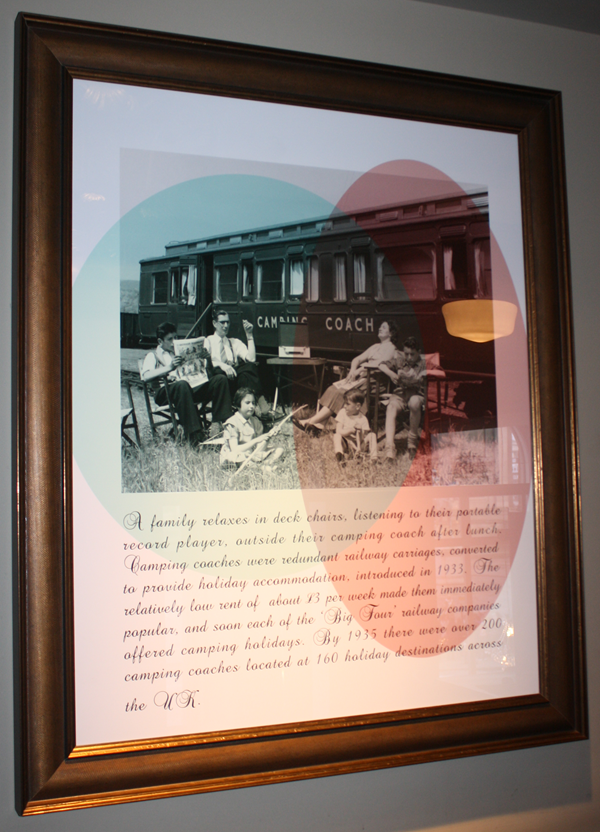
The text reads: A family relaxes in deck chairs, listening to their portable record player, outside their camping coach after lunch. Camping coaches were redundant railway carriages, converted to provide holiday accommodation, introduced in 1933. The relatively low rent of about £3 per week made them immediately popular, and soon each of the ‘Big Four’ railway companies offered camping holidays. By 1935 there were over 200 camping coaches located at 160 holiday destinations across the U.K.
A framed photograph and text about the widening of the Edge Hill rail tunnel, in 1884.
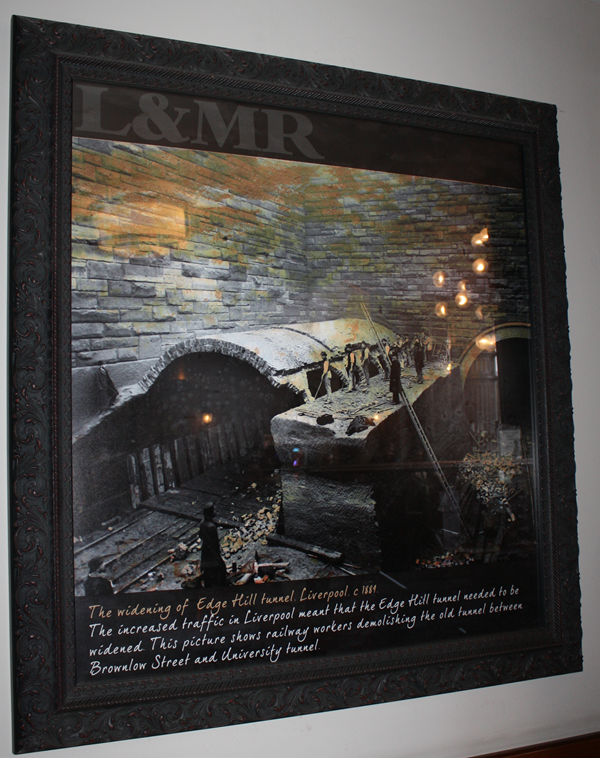
The text reads: The increased traffic in Liverpool meant that the Edge Hill tunnel needed to be widened. This picture shows railway workers demolishing the old tunnel between Brownlow Street and University tunnel.
A framed photograph and text about the urban diet.
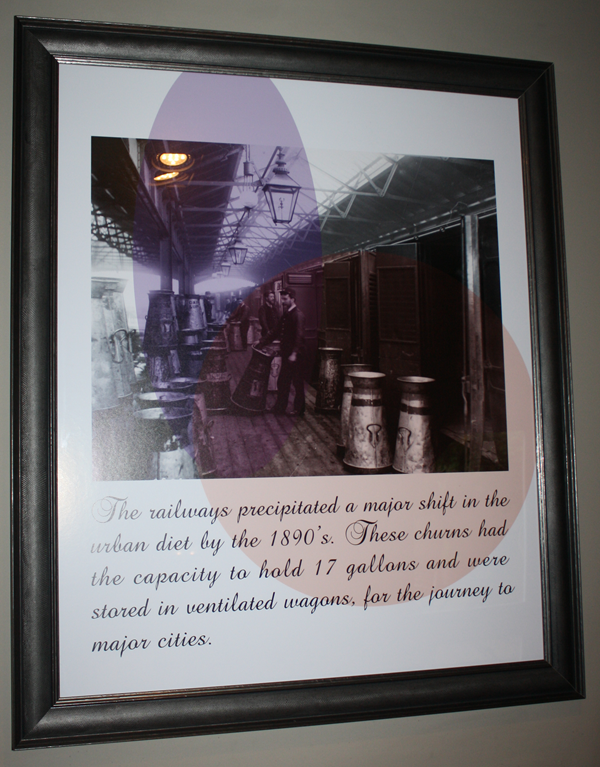
The text reads: The railways precipitated a major shift in the urban diet by the 1890’s. These churns had the capacity to hold 17 gallons and were stored in ventilated wagons, for the journey to major cities.
A framed photograph and text about buying refreshments on the station.

The text reads: Passengers could buy drinks, cakes, fruit and sandwiches from these trolleys. Most of the passengers here are servicemen. Royal Air Force personnel or soldiers carrying kit bags, about to board a waiting train.
A framed photograph and text about Howich.
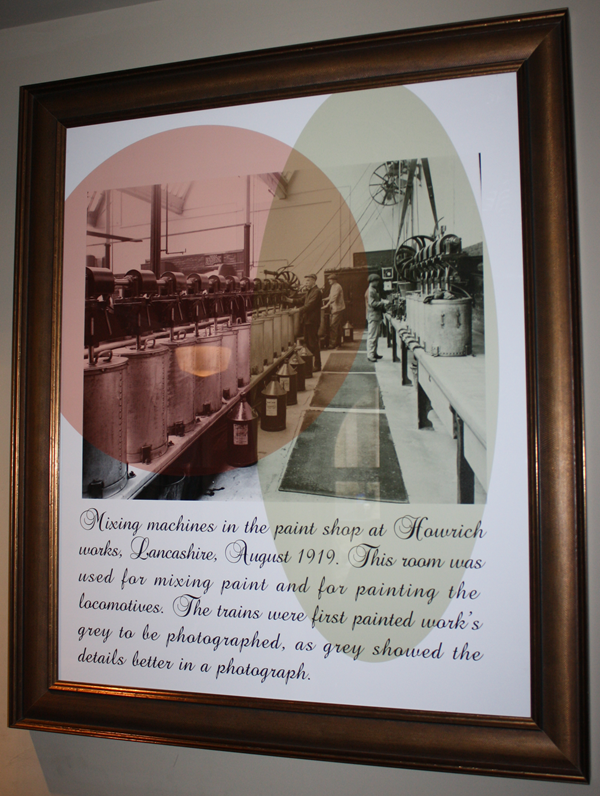
The text reads: Mixing machines in the paint shop at Howich works, Lancashire, August 1919. This room was used for mixing paint and for painting the locomotives. The trains were first painted work’s grey to be photographed, as grey showed the details better in a photograph.
A plaque warning to beware of trains.
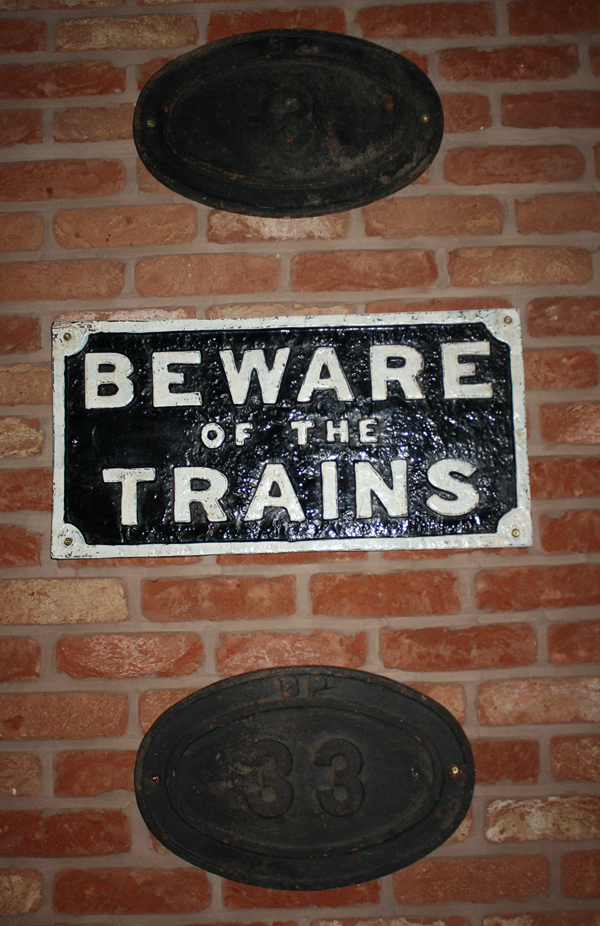
Various plaques of train numbers from the Great Western Railway Company.
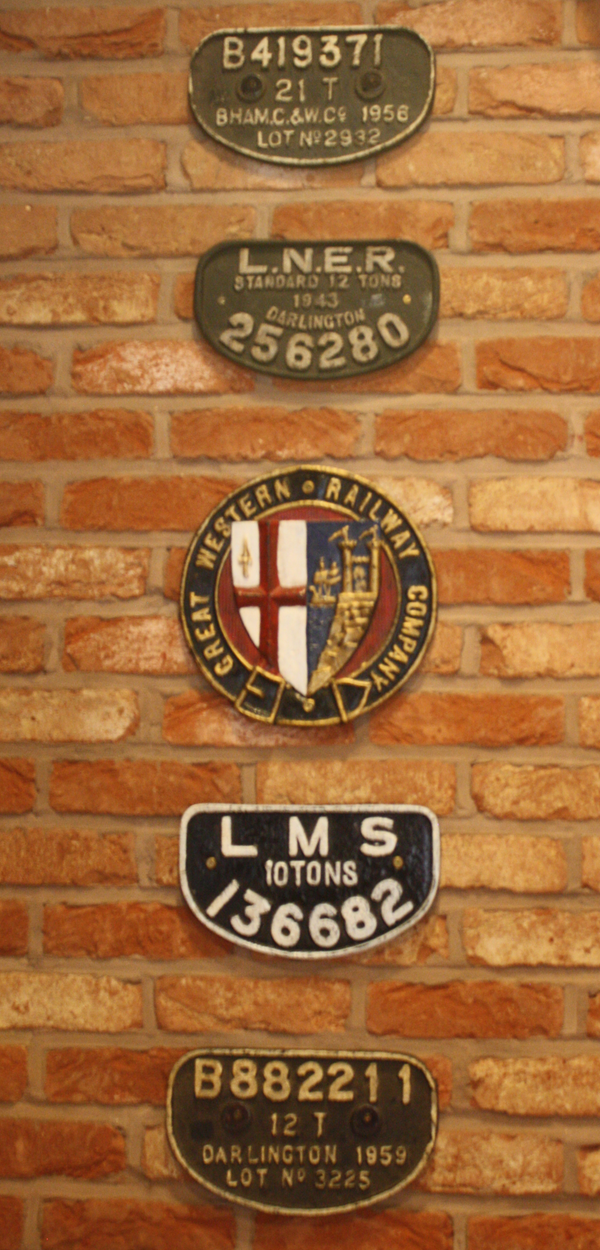
Framed old train tickets. Destinations include: Manchester, Ashford and London.
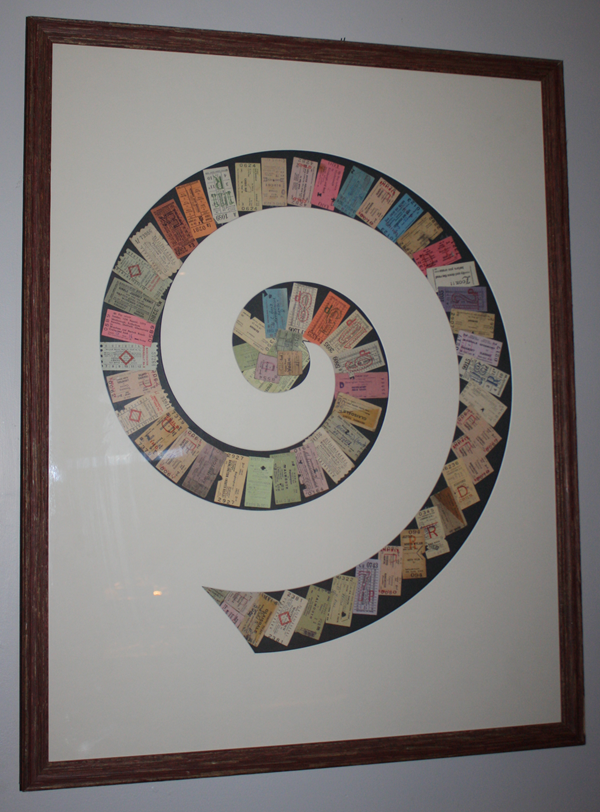
A poster advertising the Cheshire Lines Railway.
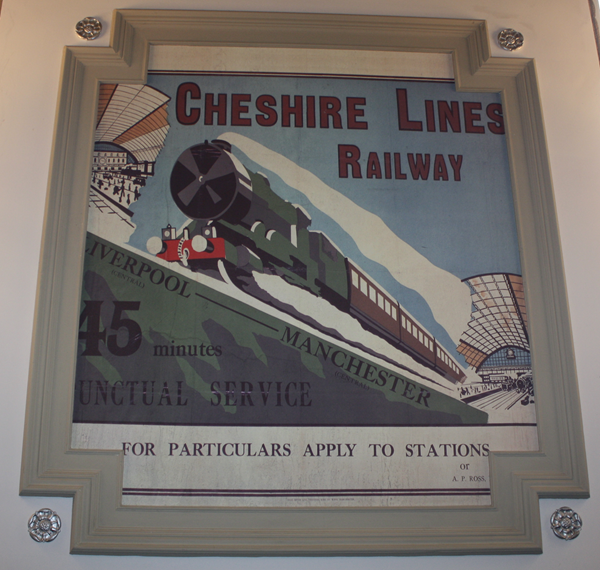
A poster advertising the railway line running from Liverpool to Grimsby, York and Hull.
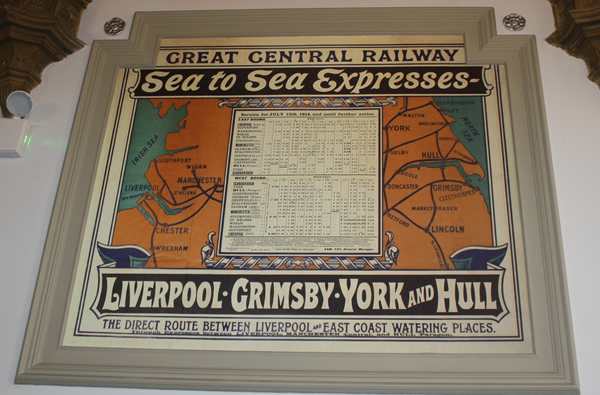
Posters advertising the Liverpool Overhead Railway.
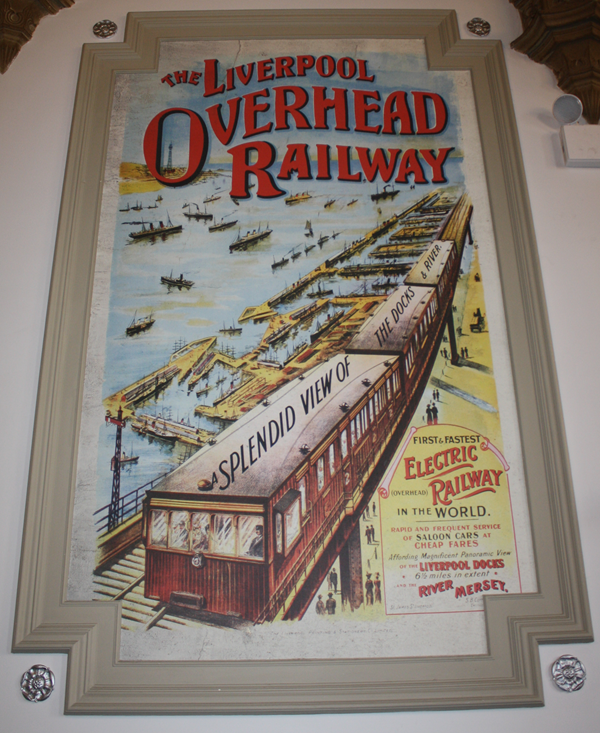
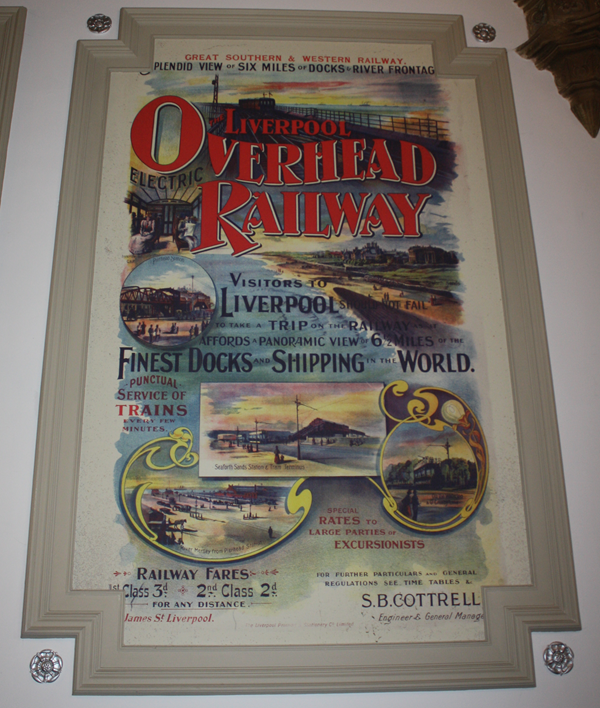
A photograph on the wall, showing an old steam train.
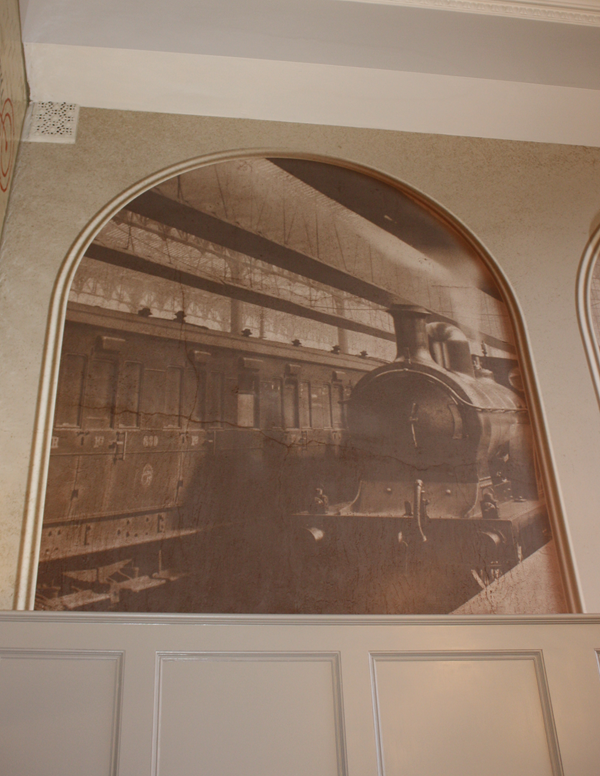
A photograph on the wall showing an old train platform.
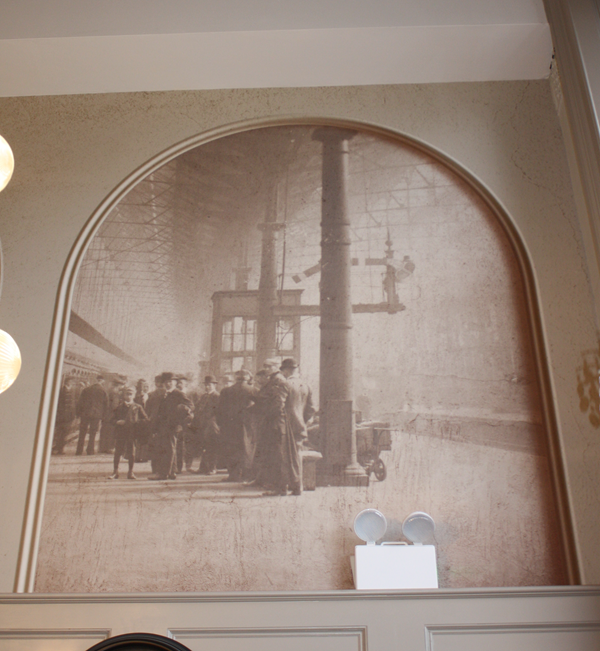
A framed photograph of two people working on the railway line lights.
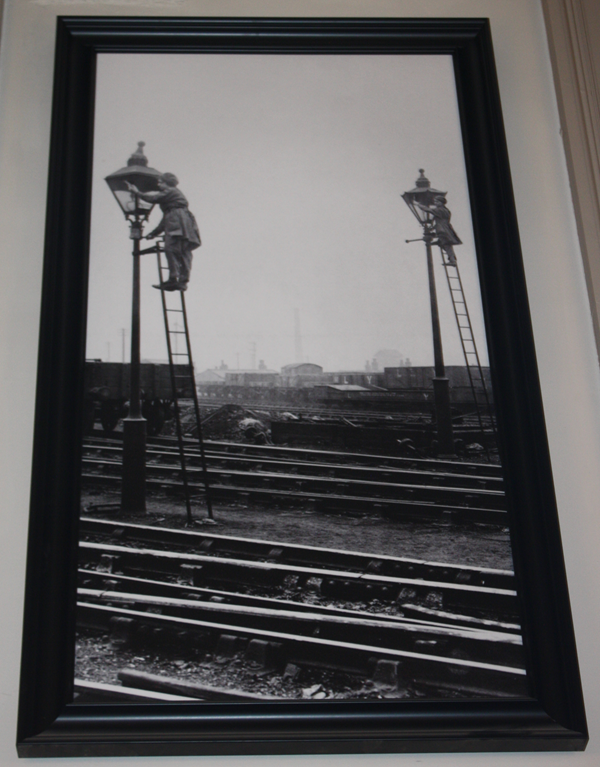
A framed photograph of an old train in a workhouse.
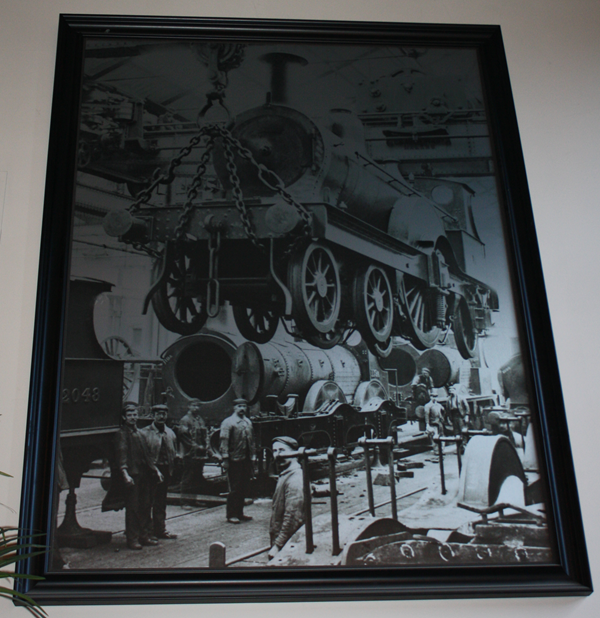
A framed map of Liverpool.
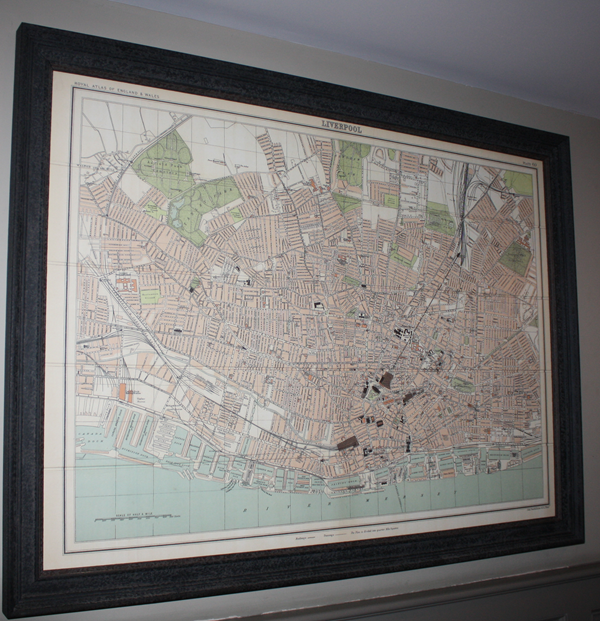
A framed poster advertising the steam boat sailing from Liverpool to north Wales.
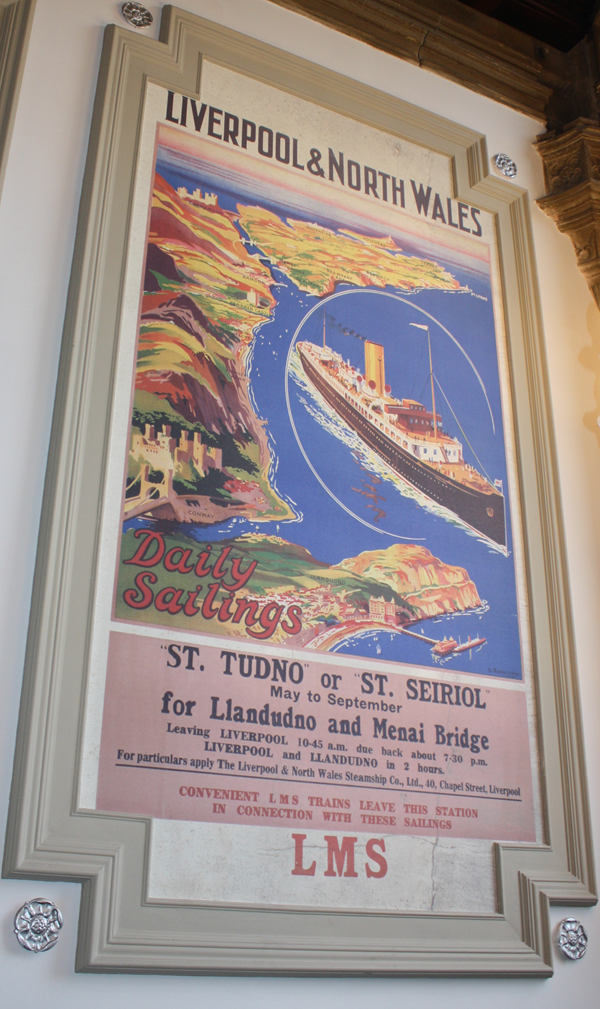
The steam boat would sail from Liverpool to Llandudno in two hours. Trains were run in connection with boat sailings.
A framed poster advertising a steam ship service between Liverpool and Belfast.
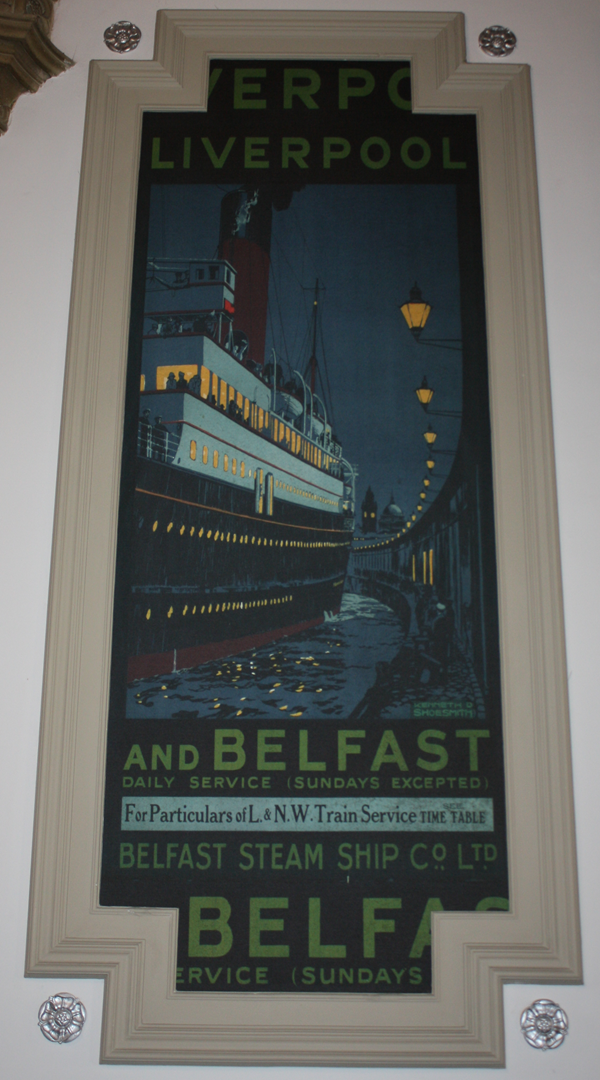
A poster showing details and images of the Liverpool Empire Theatre.
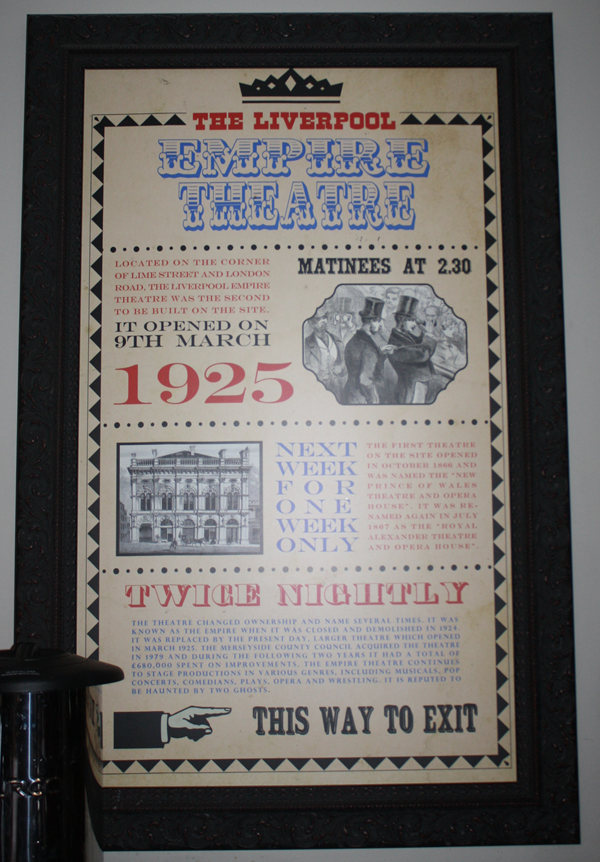
The poster reads: Located on the corner of Lime Street and London Road, the Liverpool Empire Theatre was the second to be built on the site. It opened on 9th March 1925.
The first theatre on the site opened in October 2866 and was named the ‘new Prince of Wales theatre and opera house’. It was renamed again in July 1867 as the ‘Royal Alexander theatre and opera house’.
The theatre changed ownership and name several times. It was known as the empire when it was closed and demolished in 1924. It was replaced by the present day, larger theatre which opened in March 1925. The Merseyside county council acquired the theatre in 1979 and during the following two years it had a total of £680,000 spent on improvements. The Empire theatre continues to stage productions in various genres, including musicals, pop concerts, comedians, plays, opera and wrestling. It is reputed to be haunted by two ghosts.
A framed photograph and text about windmills in Lime Street.
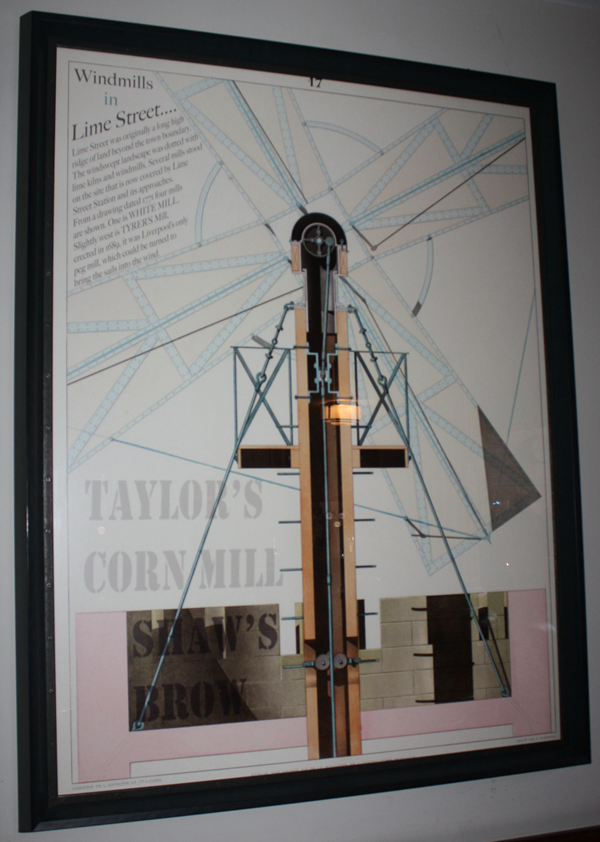
The text reads: Lime Street was originally a long high ridge of land beyond the town boundary. The windswept landscape was dotted with lime kilns and windmills. Several mills stood on the site that is now covered by Lime Street Station and its approaches. From a drawing dated 1771 four mills are shown. One is WHITE MILL. Slightly west is TYRER’S Mill, erected in 1689, it was Liverpool’s only peg mill, which could be turned to bring the sails into the wind.
Framed photographs and text about Jim Brady.
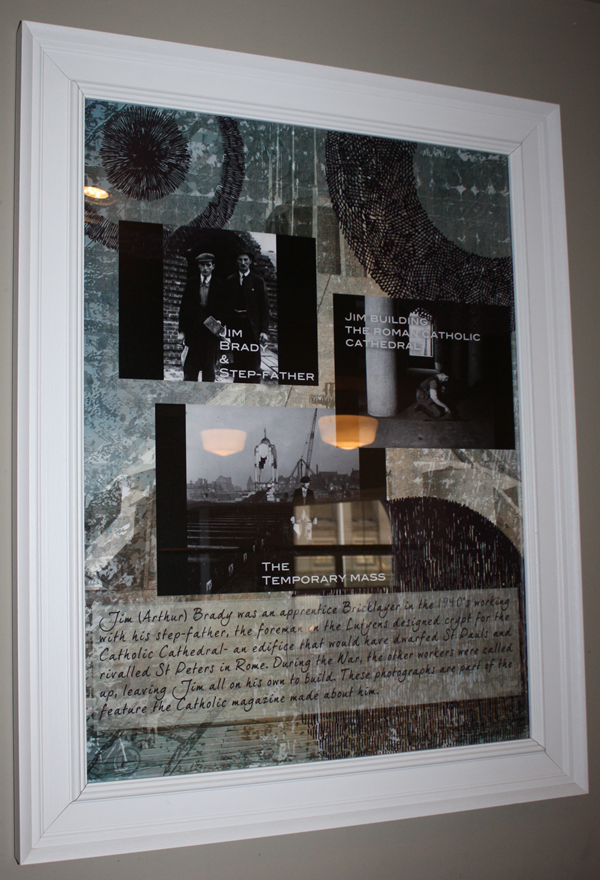
The text reads: Jim (Arthur) Brady was an apprentice Bricklayer in the 1940’s working with his step-father, the foreman on the Lutyens designed crypt for the Catholic Cathedral- and edifice that would have dwarfed St Pauls and rivalled St Peters in Rome. During the War, the other workers were called up, leaving Jim all on his own to build. These photographs are part of the feature the Catholic magazine made about him.
A painting on the wall of the old North Western Liverpool train line.
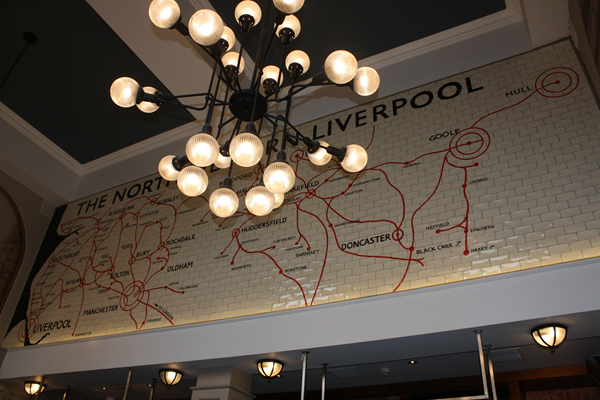
Old train lights hung on the wall.
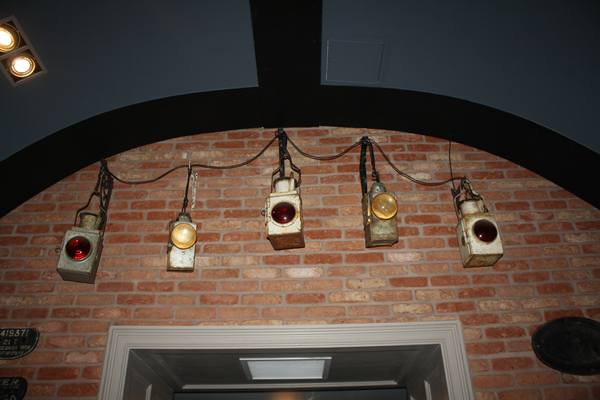
Framed paintings by artist John Petch entitled Back North John Street; I Mann Island; Jubilee Bridge 2012.
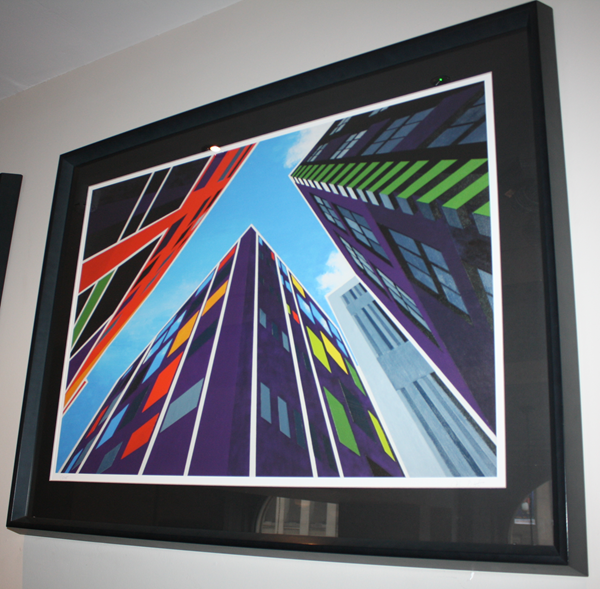
The text reads:
John Petch
John Petch was born in Liverpool, where he trained to teach art in a number of local schools.
“My work investigates the relationship between line and space. Challenging how the brain perceives and makes sense of the difference between what is understood and unfamiliar. I began painting in the mid-1960s moving from Op Art to Geometrical Abstraction being inspired by geometric imagery and pattern. My paintings invite the viewer to be drawn into a conversation from a simple statement of pattern to the relationship between art and mathematical special awareness. I am currently exploring the relationship between line and shape in the environment particularly buildings and the spaces between”.
Back North John Street
Back North John Street in Liverpool was painted to investigate the relationship between line and space in the city. How shape and line in buildings interact, how old and new structures sit together creating spaces of sky. How light reflects and interacts with the viewer’s perspective, a changing vibrant urban landscape of mood and energy.
The painting was long listed for the 2014 John Moors Prize.
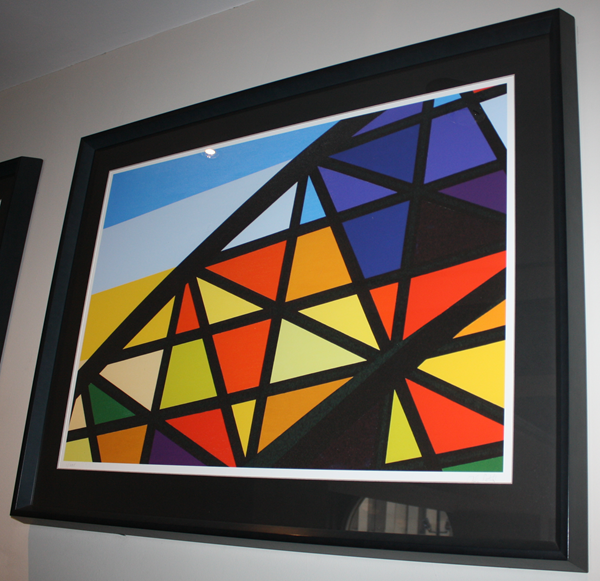
Jubilee Bridge 2012
Spanning the River Mersey and linking Widnes and Runcorn ‘Jubilee Bridge 2012’ was painted to mark the Queen’s Golden Jubilee and was exhibited in the Halton Open Art Exhibition 2012. This is a personal recollection of driving from Wales into Widnes every Monday morning for 2 years. As the sun rose and bounced off the structure the morning colours contrasted the darkened span. The painting has a bold use of colour in a hard edge abstract style.
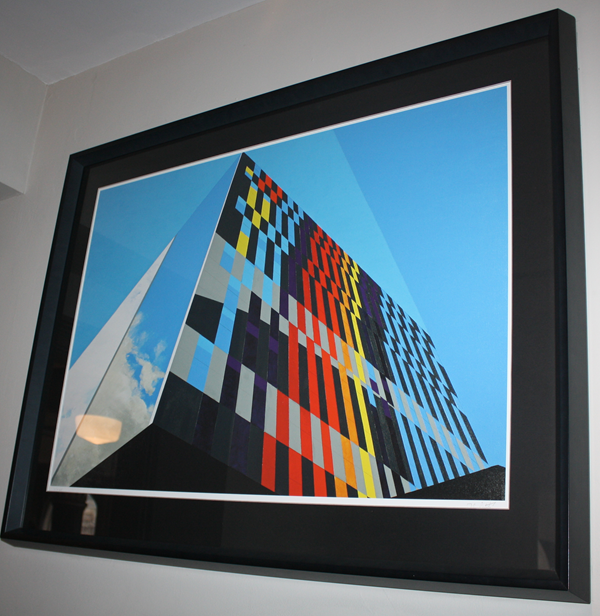
I Mann Island
The painting is one of Liverpool’s waterfront modern buildings, I Mann Island. I wanted to capture something of Liverpool’s sailing past, together with a modern building form with the evening sun catching the windows which appear to be part of the sky. I used my previous experimentation in geometric abstract and op art to investigate colour, line perspective and mood. The original painting was displayed in the building itself, hub of the 2014 International Festival of Business.
A framed painting entitled Liverpool Love!, by Susan Finch.
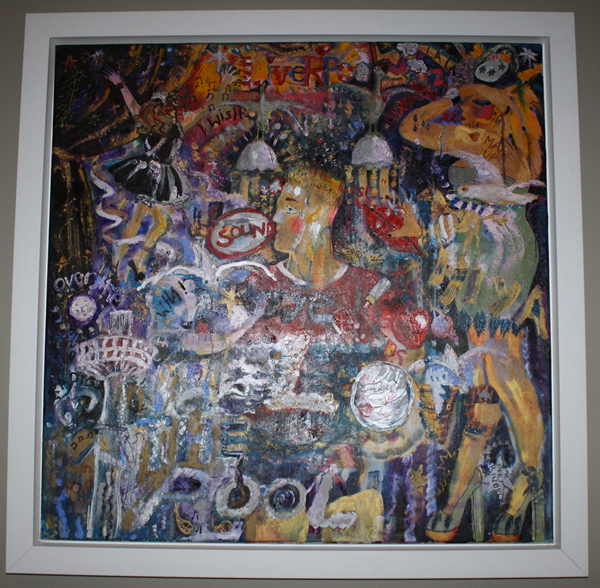
The text reads: Artist Susan Finch has been represented by dot-art since 2009. She studied Fine Art at Manchester Polytechnic and returned to her native Liverpool in the 1980s. She has exhibited at the Royal Academy, the Manchester Academy of Art and St Georges Hall, she has had a number of solo and joint shows and her paintings sell to private collectors and are rented to a variety of corporate clients in Liverpool. Much of Susan’s work celebrates the beauty and character of the city and she is especially well known for her paintings of Sefton Park Palm house. Alongside her Liverpool pictures, she loves to paint the human figure using vibrant colour, broken text and expressive line.
“I painted Liverpool Love! As a celebration of the city on a Saturday night. Big, bold and full of life, the city streets pulse with excitement, music banter and song fill the air and even the seagulls want to join the party! So dress up to the nines, put your lippy on and head into town, it’s going to be a fantastic night”.
A framed photograph display by Tristan Brody-Jacobs.
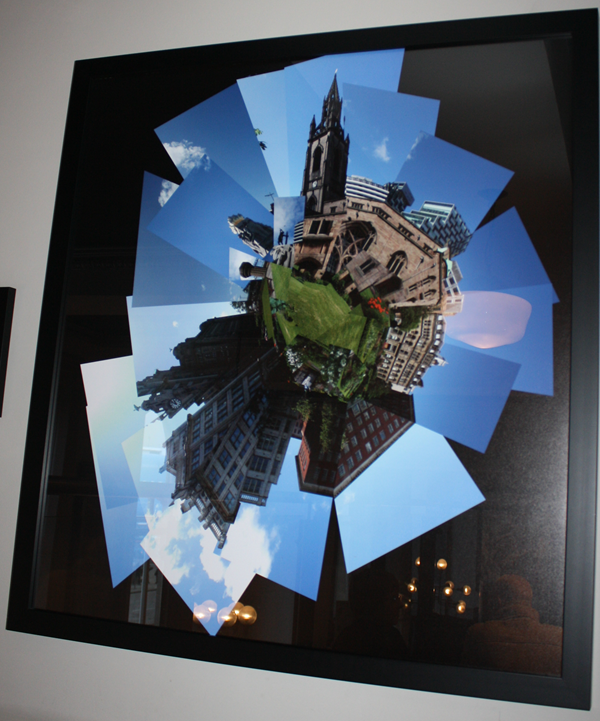
The text reads: Tristan is a Liverpool artist who works with a range of materials and techniques. He loves the city and explores it in different ways as a street artist, performer and photographer.
These images have been commissioned for J D Wetherspoon. They are re-imaginings of the city rooftops and architecture in new ways.
Internal photographs of The North Western.
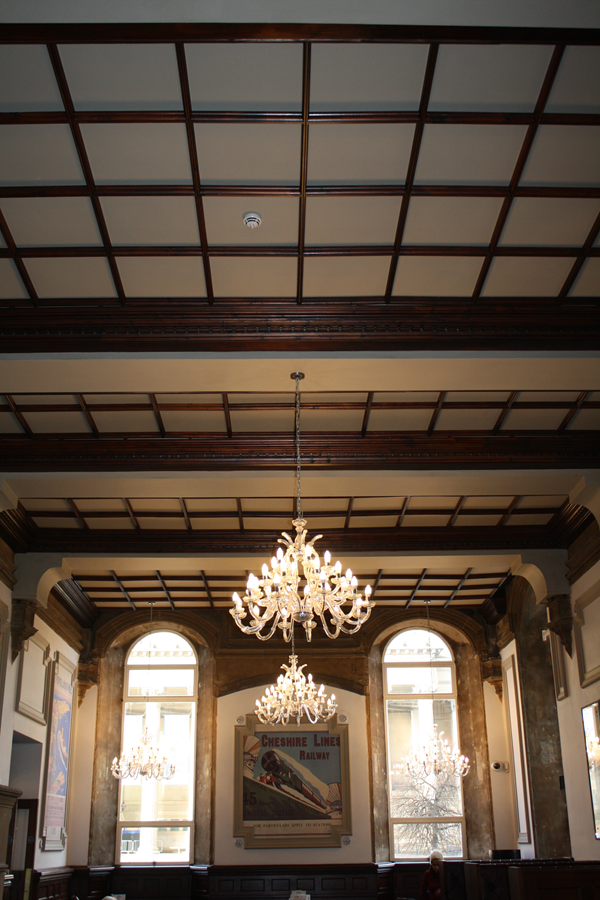
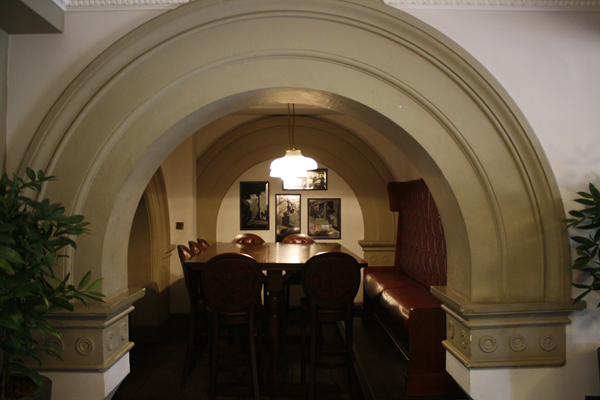
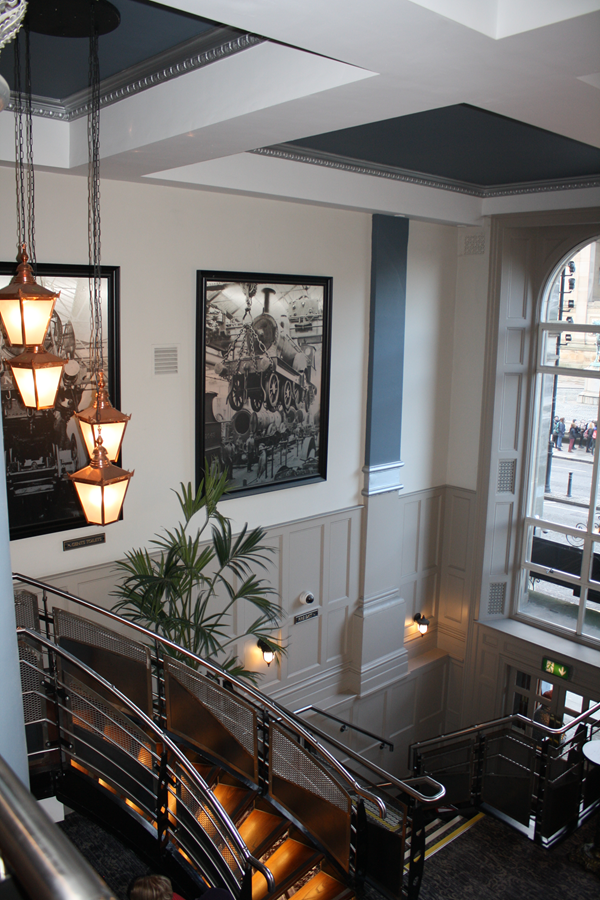
A plaque documenting the history of The North Western.
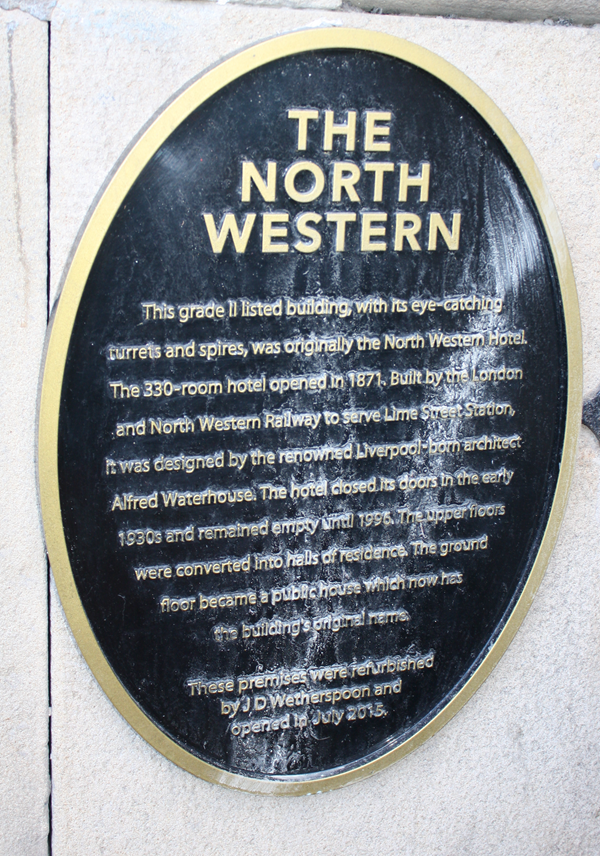
External photograph of the building – main entrance.
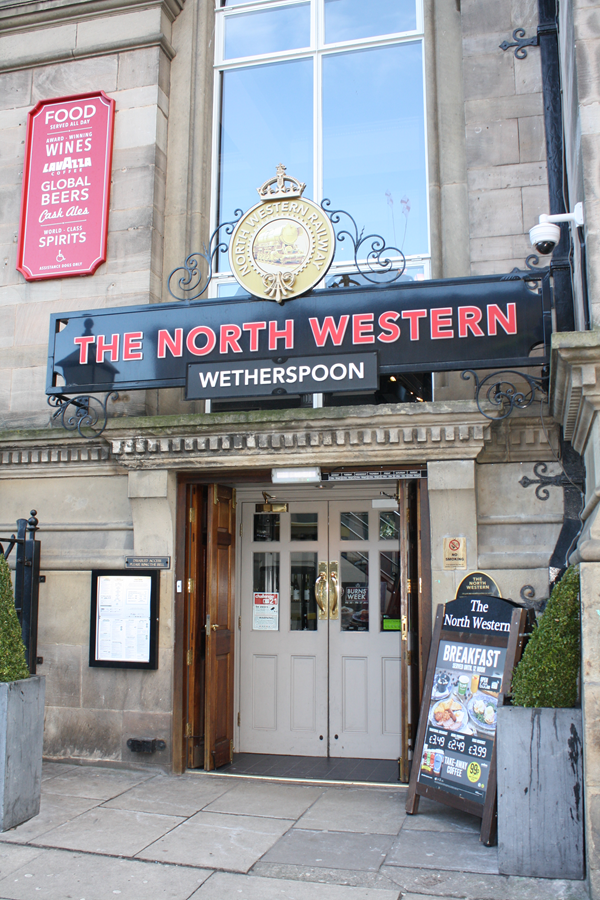
If you have information on the history of this pub, then we’d like you to share it with us. Please e-mail all information to: pubhistories@jdwetherspoon.co.uk